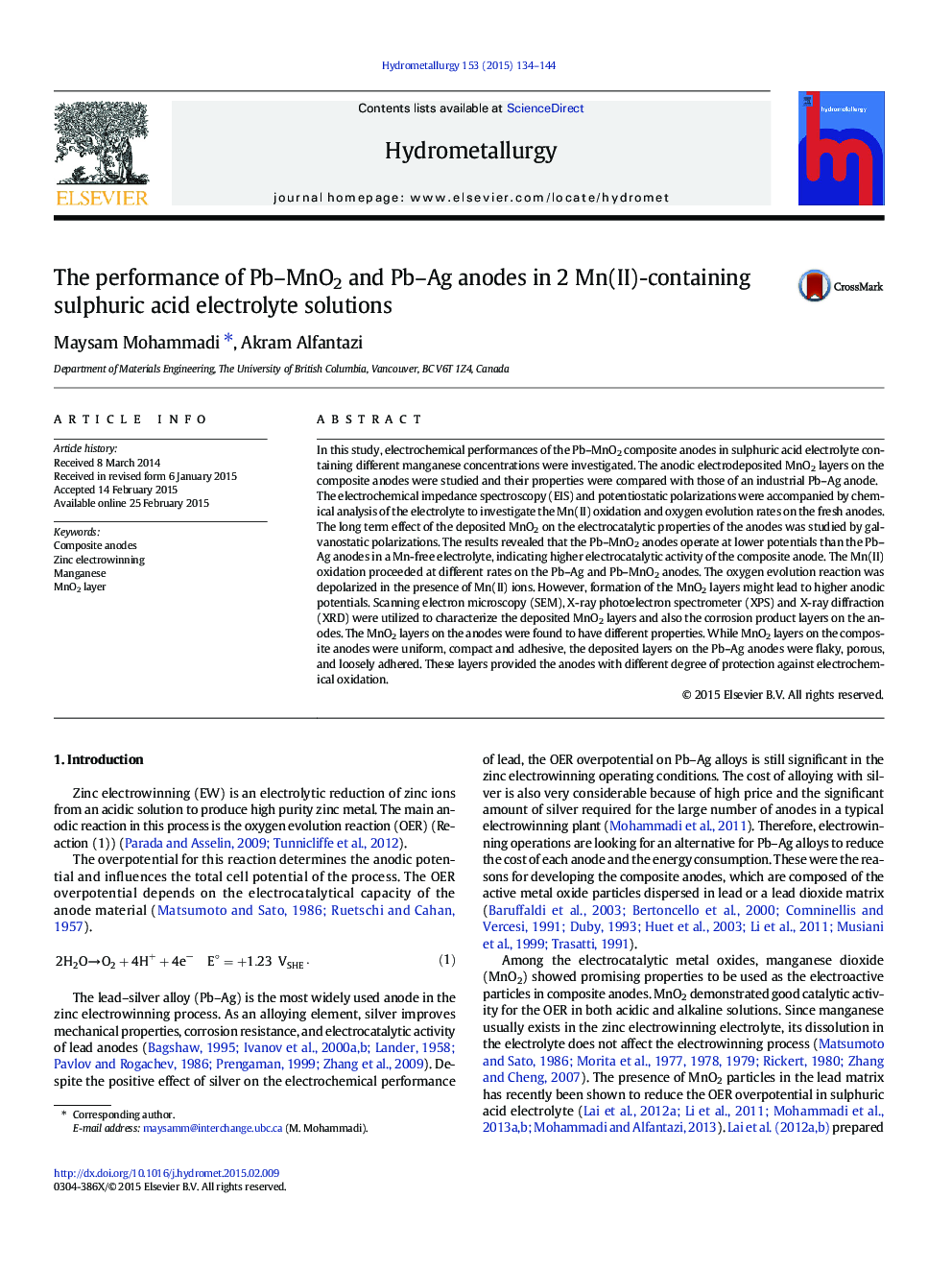| Article ID | Journal | Published Year | Pages | File Type |
|---|---|---|---|---|
| 212061 | Hydrometallurgy | 2015 | 11 Pages |
•Performances of Pb–MnO2 anodes in Mn-containing EW electrolyte were studied.•Pb–MnO2 anodes show better electrocatalytic activity than industrial Pb–Ag anodes.•Density and other properties of deposited MnO2 layer affect the anode performances.•Mechanisms of MnO2 deposition of anodes and in the electrolyte are different.•MnO2 layers on the Pb–MnO2 anodes notably protect the anode against corrosion.
In this study, electrochemical performances of the Pb–MnO2 composite anodes in sulphuric acid electrolyte containing different manganese concentrations were investigated. The anodic electrodeposited MnO2 layers on the composite anodes were studied and their properties were compared with those of an industrial Pb–Ag anode.The electrochemical impedance spectroscopy (EIS) and potentiostatic polarizations were accompanied by chemical analysis of the electrolyte to investigate the Mn(II) oxidation and oxygen evolution rates on the fresh anodes. The long term effect of the deposited MnO2 on the electrocatalytic properties of the anodes was studied by galvanostatic polarizations. The results revealed that the Pb–MnO2 anodes operate at lower potentials than the Pb–Ag anodes in a Mn-free electrolyte, indicating higher electrocatalytic activity of the composite anode. The Mn(II) oxidation proceeded at different rates on the Pb–Ag and Pb–MnO2 anodes. The oxygen evolution reaction was depolarized in the presence of Mn(II) ions. However, formation of the MnO2 layers might lead to higher anodic potentials. Scanning electron microscopy (SEM), X-ray photoelectron spectrometer (XPS) and X-ray diffraction (XRD) were utilized to characterize the deposited MnO2 layers and also the corrosion product layers on the anodes. The MnO2 layers on the anodes were found to have different properties. While MnO2 layers on the composite anodes were uniform, compact and adhesive, the deposited layers on the Pb–Ag anodes were flaky, porous, and loosely adhered. These layers provided the anodes with different degree of protection against electrochemical oxidation.
